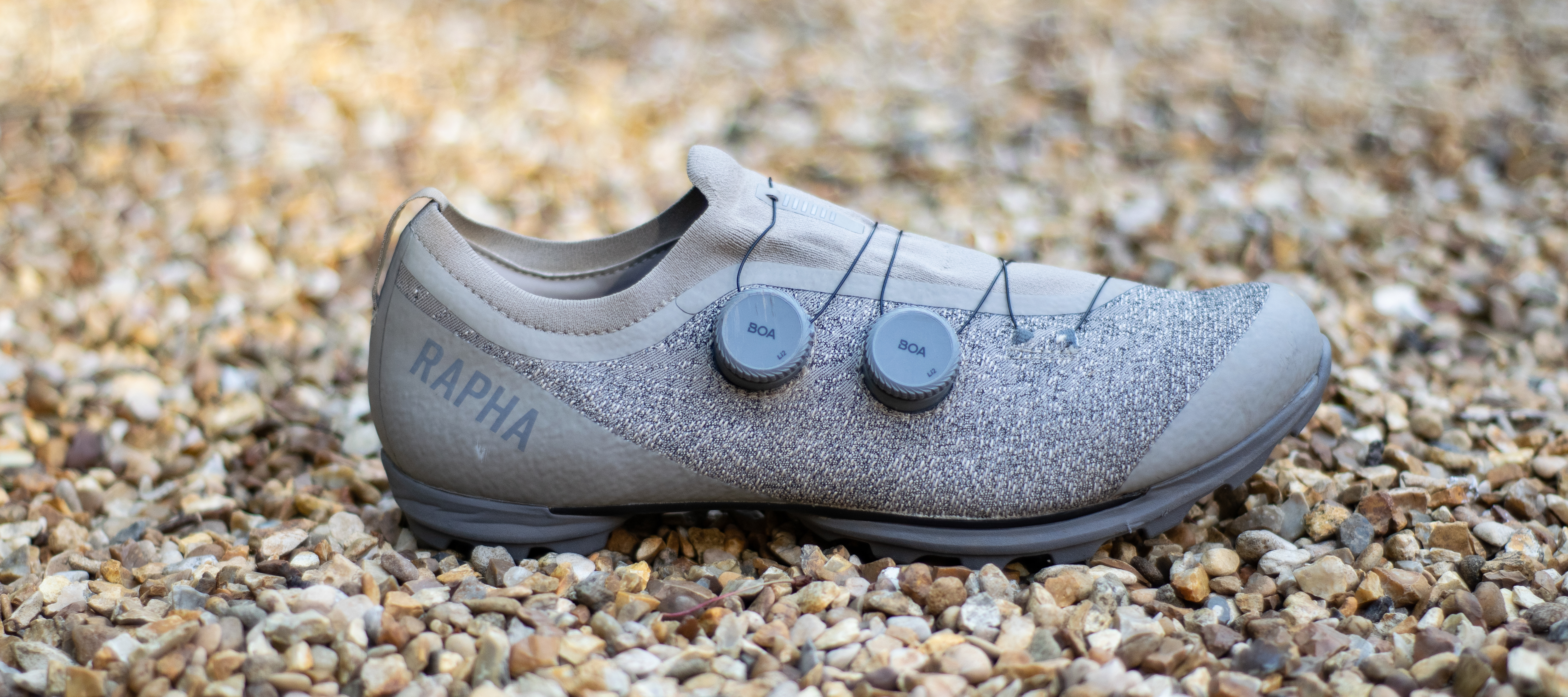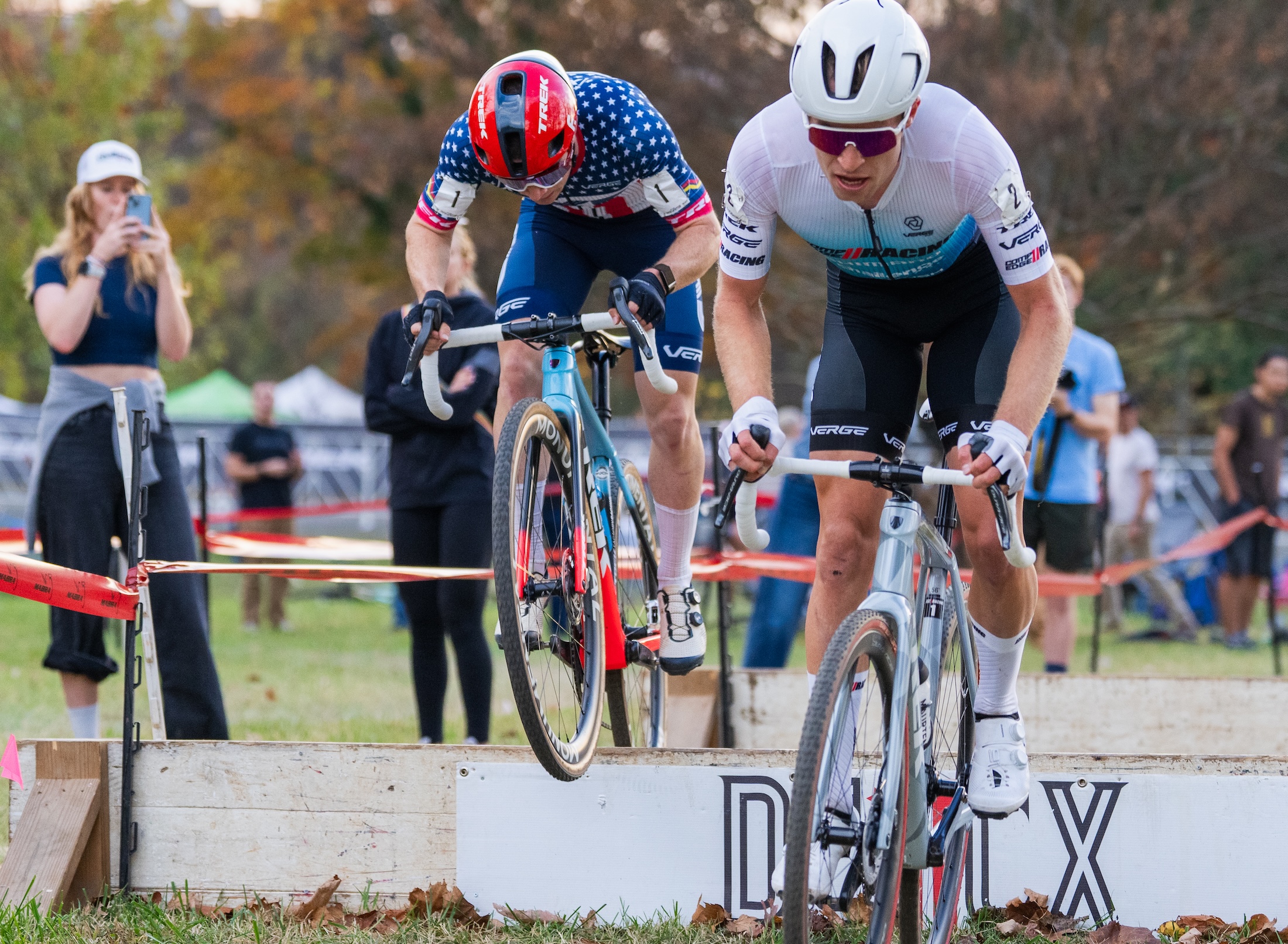Cyclingnews Verdict
I really like wearing and riding in these shoes, they provide a very comfortable fit and foot hold for me, and I feel like I can do everything in them. The good experience means they have a four-star review despite a technical issue, which I'm willing to accept is a one-off currently. They are also pretty expensive, and I'm not sure they offer the best value, a very nice pair of shoes though.
Pros
- +
Stylish aesthetics
- +
Sock construction is very comfortable
- +
Effective Boa lace positioning points
Cons
- -
Very high RRP
- -
Some debonding issues on the uppers
You can trust Cyclingnews
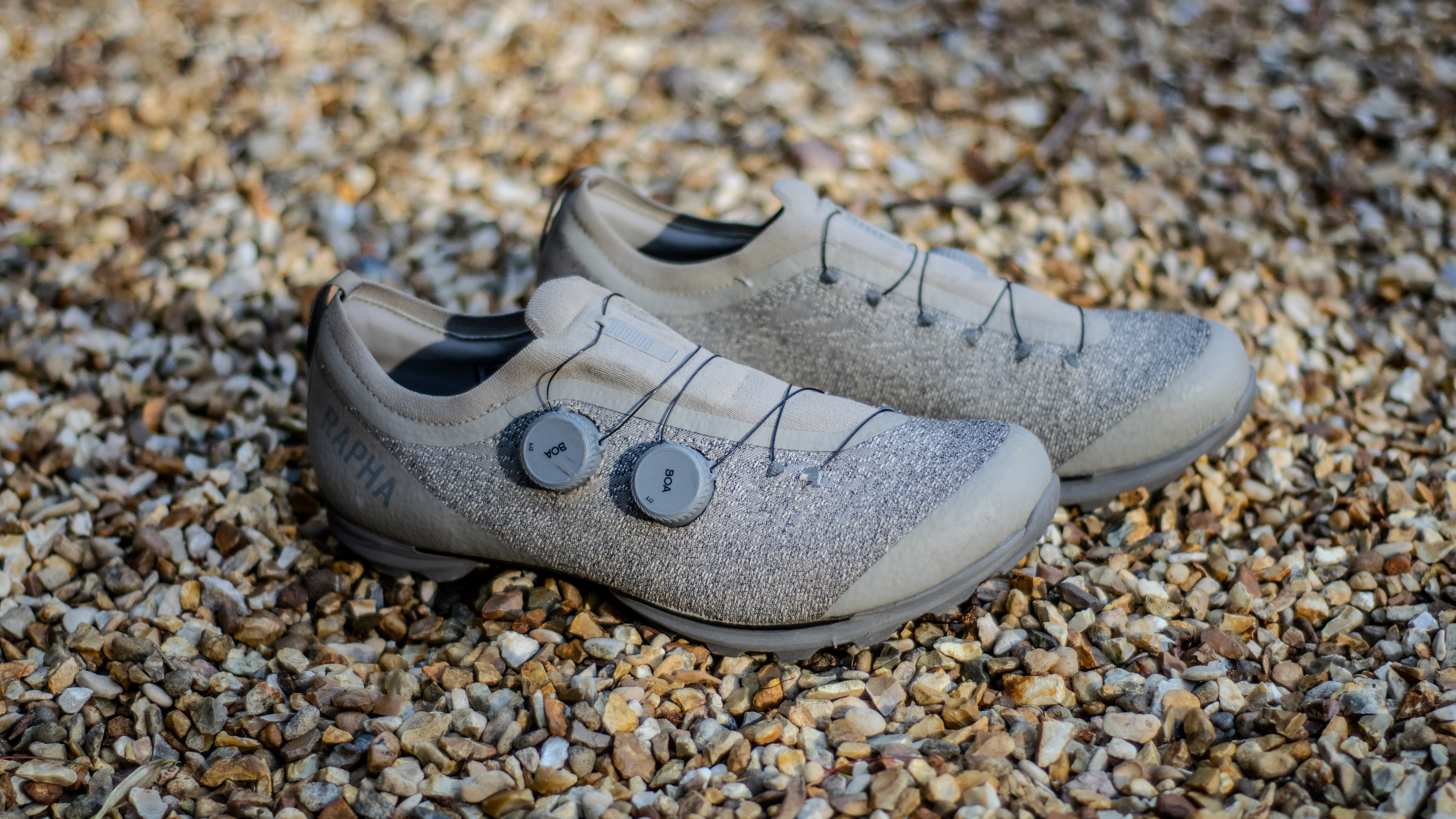
Price: £350 / $480 / €420
Sizes: 36-47
Weight: 311g each - EU 43.5
Colours: Black / Dove-Rockridge (pictured)
Cleats: Two bolt mount
Rapha Powerweave shoes have been on the market for several years now. At the start of April, the brand launched its Pro Team road and Pro Team gravel Powerweave shoes, which follow on from the Explore Powerweave models that launched back in 2021.
I've been riding in the Pro Team Powerweave gravel shoes for a few months now, and used them for the Traka 100 gravel race, which proved to be an excellent test for them.
The new Pro Team shoes have received a knitted 'sock' construction around the ankle, which also eliminates the need for a separate tongue. The brand says this will eliminate unwanted tongue movement, since there isn't one, and provide a locked-in fit.
The shoes also get a Vibram Megagrip outsole, paired with a carbon plate for rigidity. This marks the first time Rapha has used a Vibram sole.
The big clue is in the name, with Powerweave, the shoes use a 3D woven upper that uses a 40% TPU yarn that's specific to the gravel model, paired with two Boa Li2 dials. The brand says the shoes are "for total comfort and control in the most demanding off-road conditions."
The shoes aren't cheap. Retailing at a hefty £350 / $480 / €420, they are more expensive than the previous versions, and sit in the upper echelons of pricing compared to the best gravel shoes.
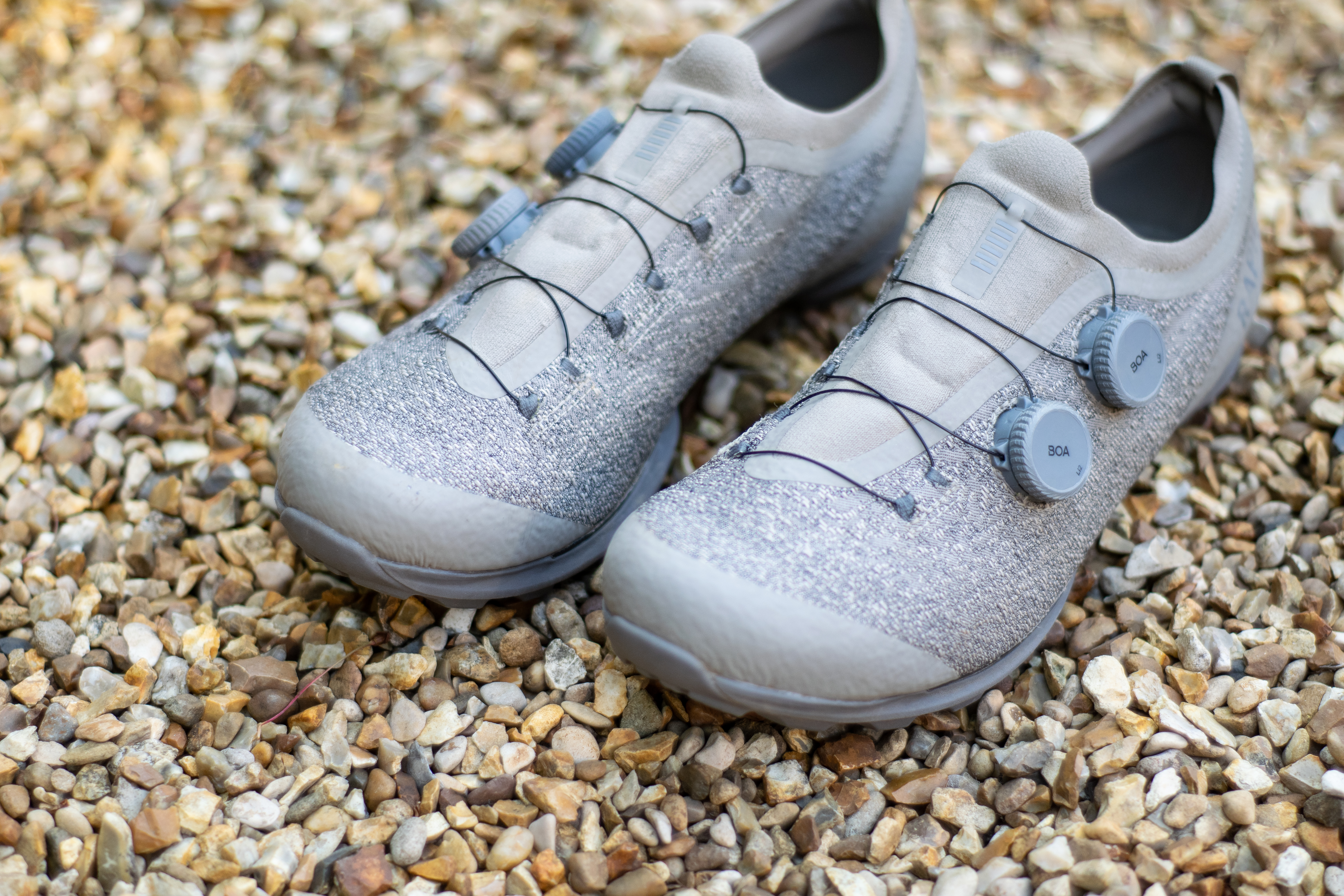
Design and Aesthetics
As usual, I'll start with aesthetics, I really like the look of these shoes; they come in two colours, Vulcan Black and the Dove / Rock Ridge version you can see in the pictures.
The latest race content, interviews, features, reviews and expert buying guides, direct to your inbox!
There is a single Rapha wordmark on the outside of each heel, and that's it for branding. Out of the box, the shoes will come with three different interchangeable arch supports.
Visually, I like the silhouette of the shoes; I think the aesthetics are spot on for all kinds of off-road riding, and they present very well overall with the incorporated tongue. I also like that the knitted ankle doesn't sit too high like a kind of mini sock, like a lot of modern football (soccer) boots do. Overall, it all just works for me.
The soles of the shoes use a Vibram MegaGrip outsole and EVA midsole. Vibram is a company that produces soles for various brands and outdoor shoes, and the MegaGrip uses a rubber compound designed to offer good grip on wet and dry surfaces. I can attest to this completely. I've run up dry dusty trails and have scrambled up muddy, steep banks out of streams. Grip and traction have been excellent.
A carbon fibre plate is used for the rest of the sole to provide some extra stiffness and strength. The shoes use a two-bolt cleat drilling, meaning they will only accept MTB-style cleats. There are two sets of cleat bolt holes in the shoes and a good amount of adjustment for cleat positioning.
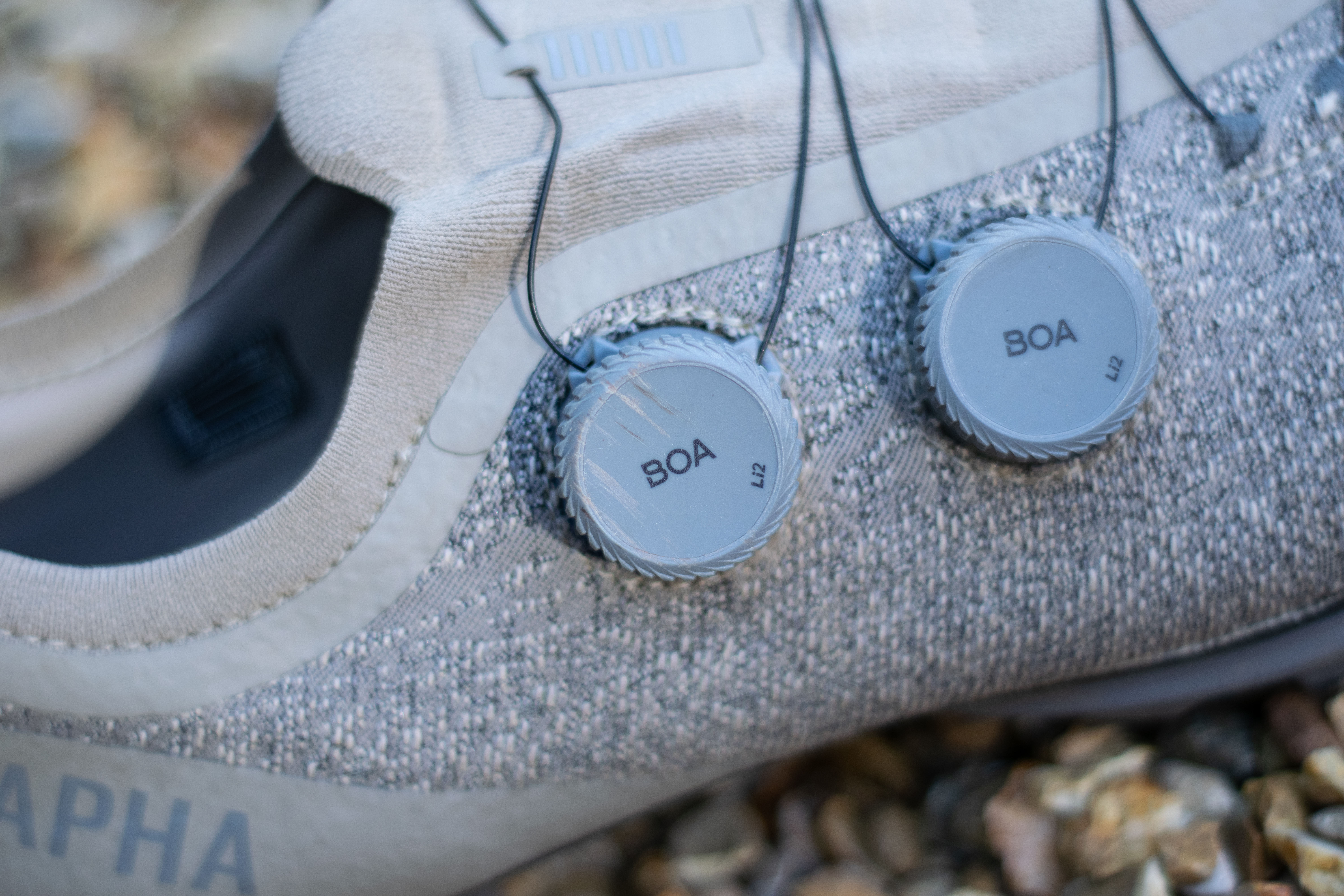
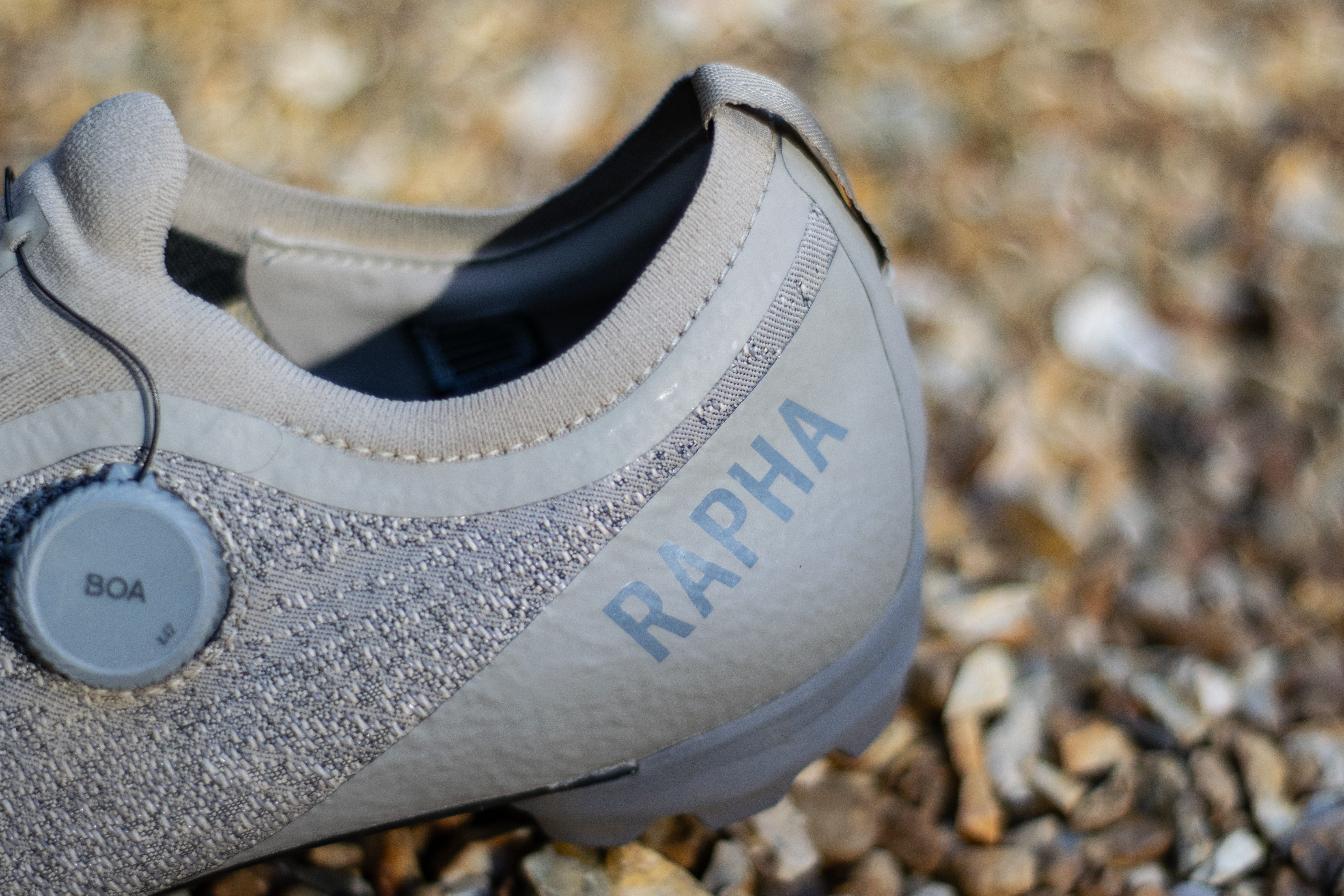
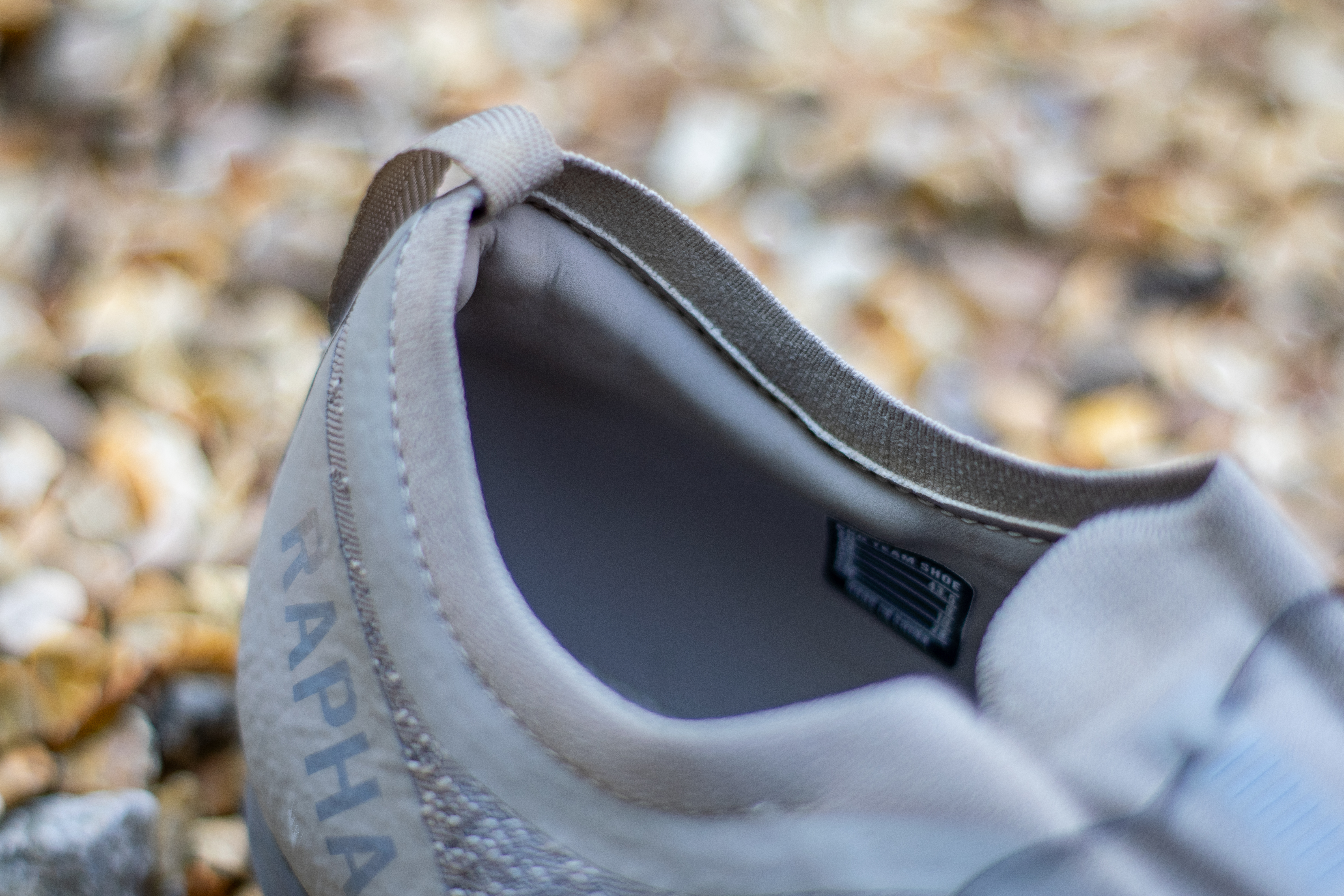
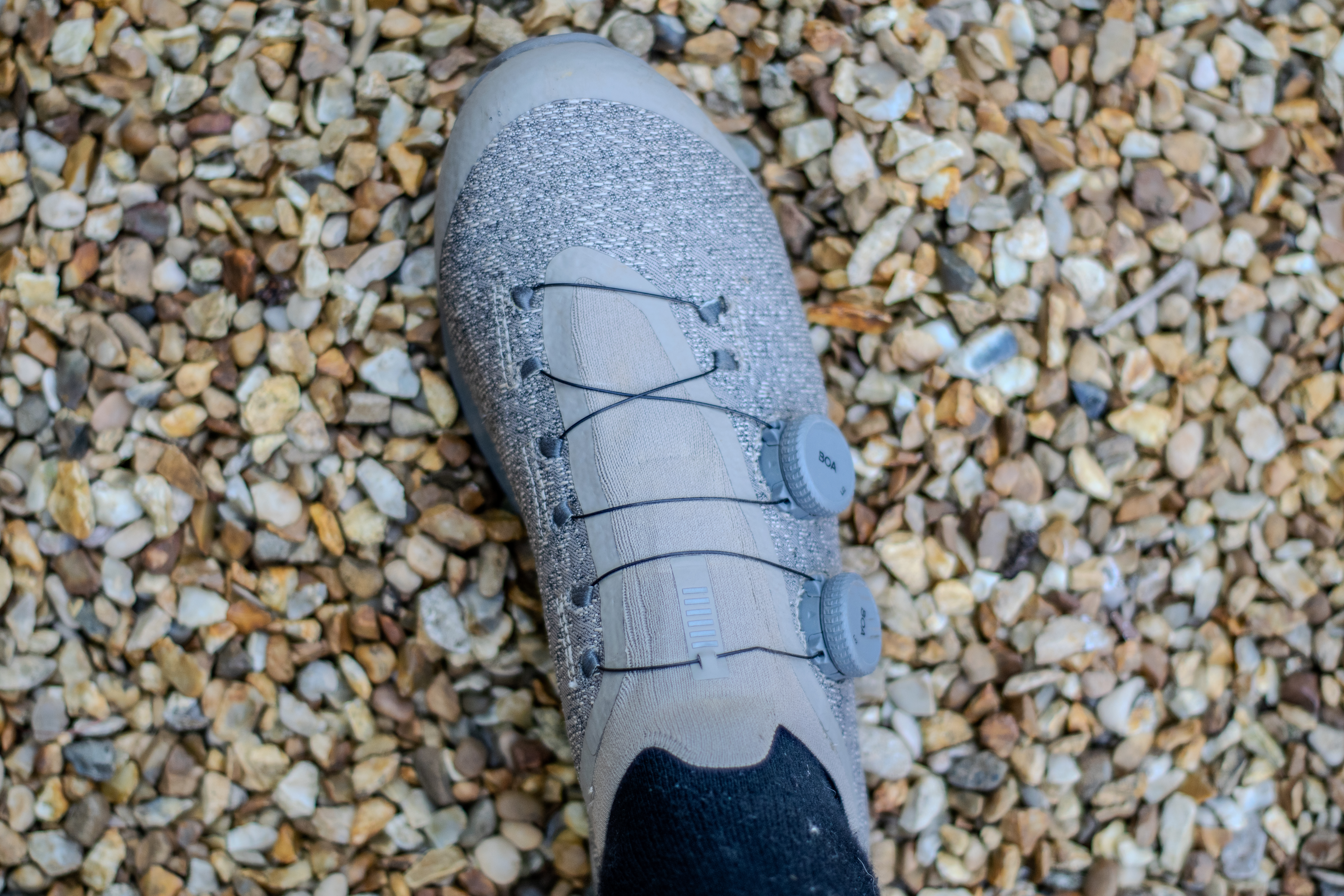
The shoes, which are made in China, use the woven Powerweave material for the majority of the uppers. Look closely, and you can spot the grey-coloured, shiny plastic-looking 'threads' which I assume are the more durable TPU (Thermoplastic Polyurethane) material Rapha has employed.
The heels and toe box have smooth protective coverings applied over the top of the Powerweave material, which wipe clean easily and provide some extra protection. As does the rubber toe bumper at the front of each toe box. At the rear, there's a neat pull loop to help you pull the shoes on if you need it. It may also prove useful for hanging and or carrying on trips, etc.
There's no tongue in the traditional sense; the uppers are a one-piece, sock-like design, and a soft, stretchy material covers the central part of the upper where the tongue would be. It's very comfortable all told, and the top of the integrated 'tongue' is raised to provide a useful hand hold to pull the shoe on. There's also a padded tongue 'pad' underneath this central section that finishes in line with the lower Boa dial; it's there to cushion the foot from tight Boa wires.
Two Boa Li2 closure dials take care of tightening and retention, and the Boa wires route through four loops across the shoe. If you aren't familiar, you can rotate the dials clockwise and anti-clockwise to tighten or loosen the dials' fit, then pull them up to completely slacken off the wire when taking the shoes off.
Rapha states that these shoes come up small and recommends sizing up a half size. There is also apparently increased room in the toe box compared to the Explore Powerweave shoes, though it still could be a little rounder, I feel. There's also no wider option for riders with wide feet, and the sole itself isn't the straightest I have seen.
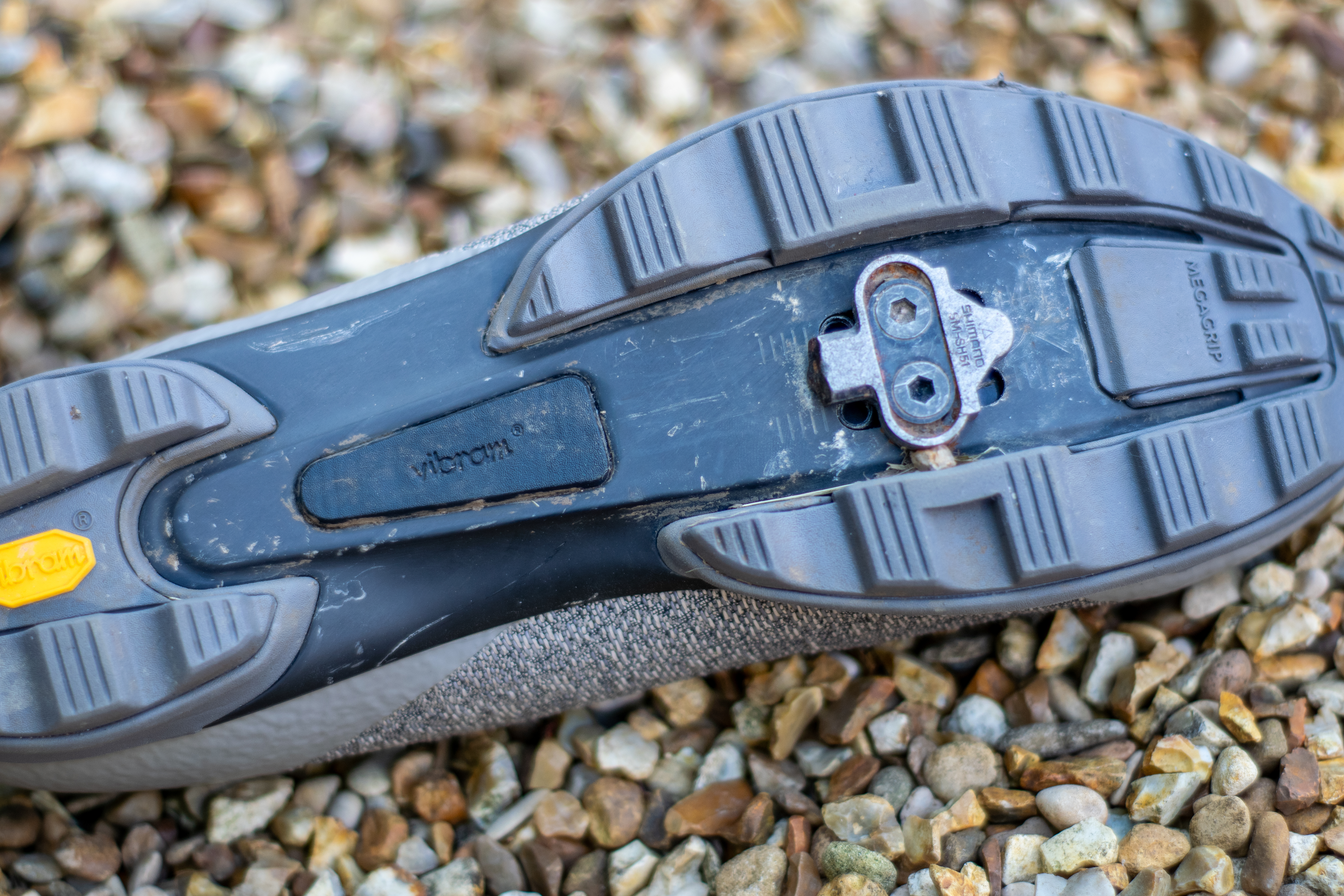
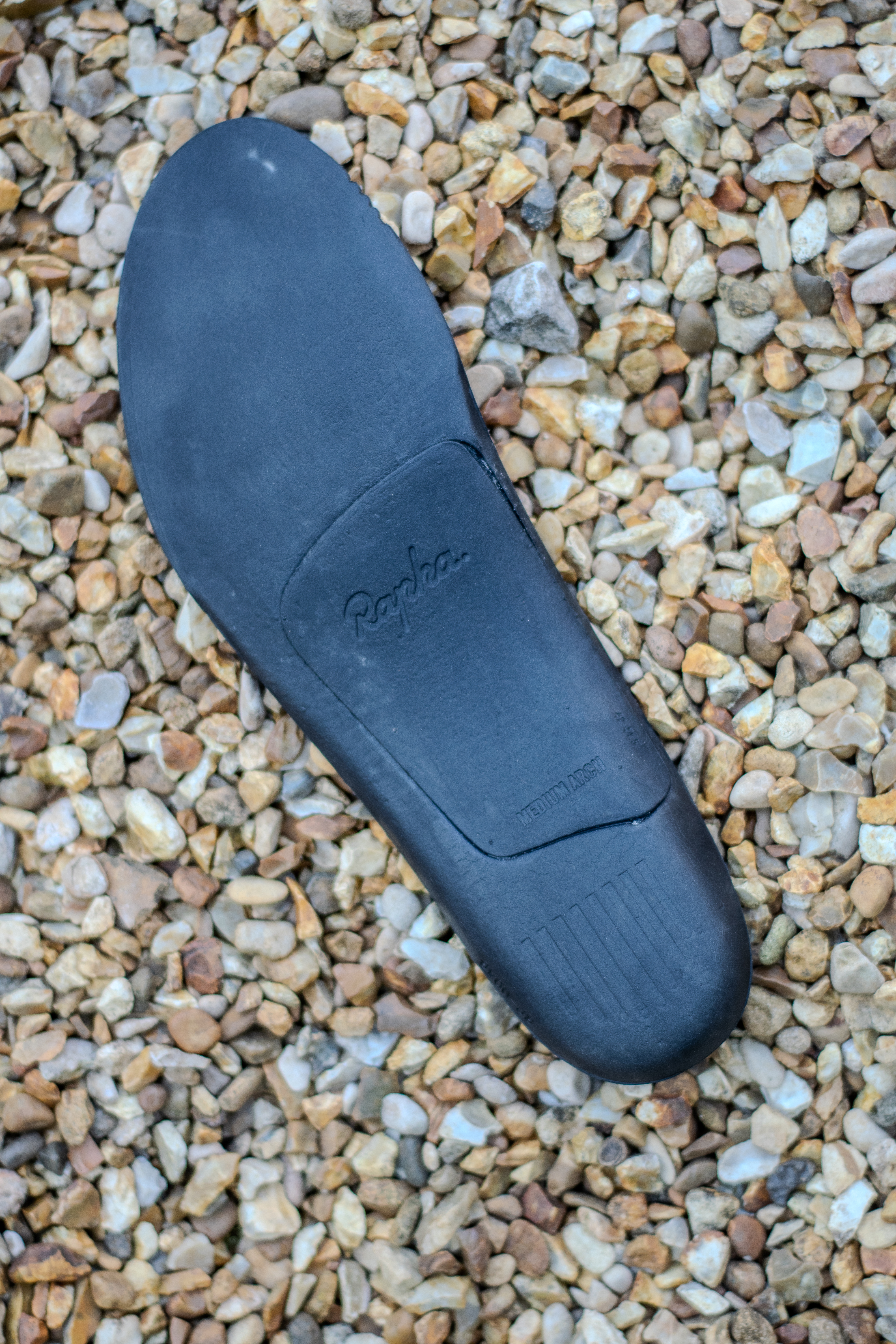
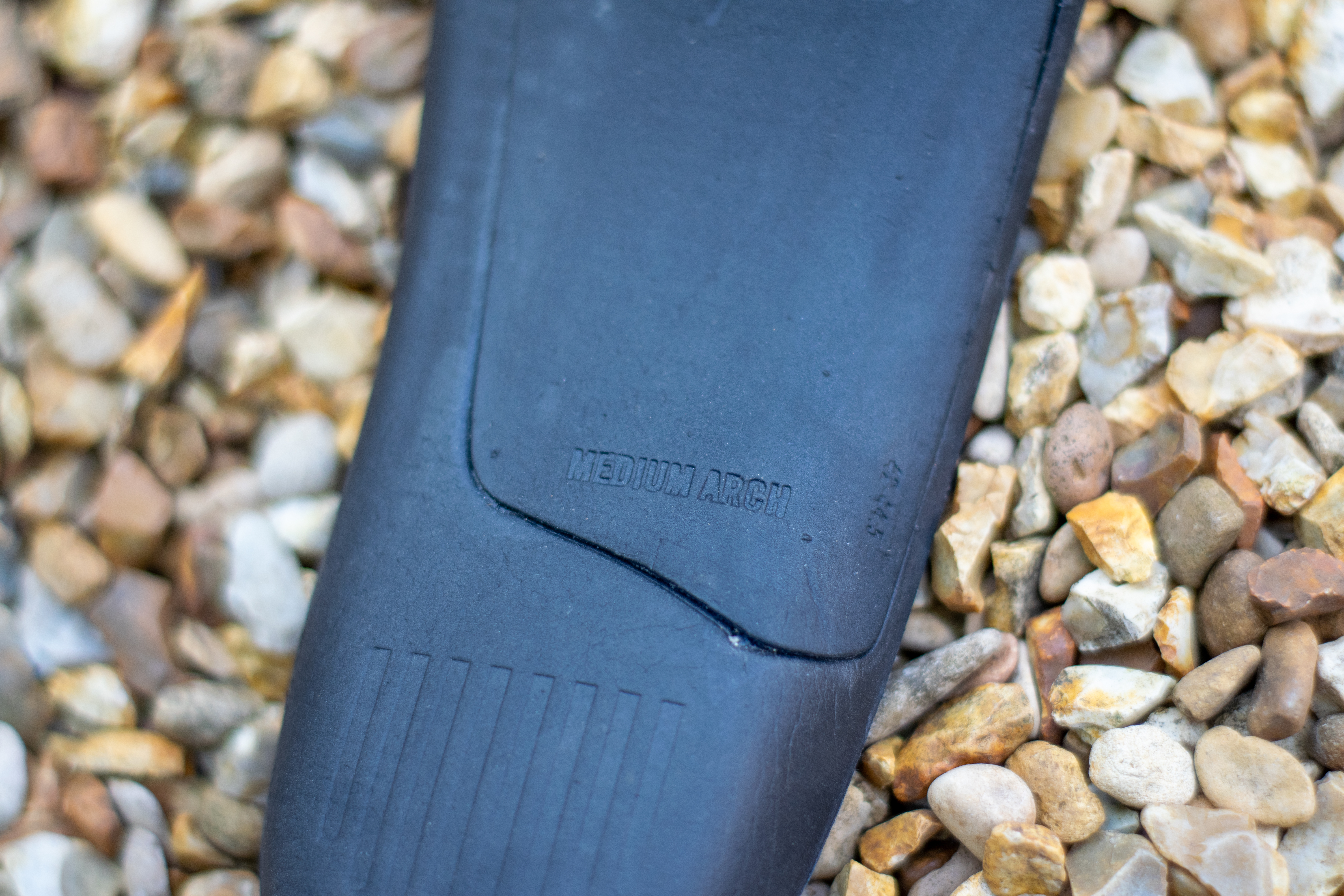
Performance
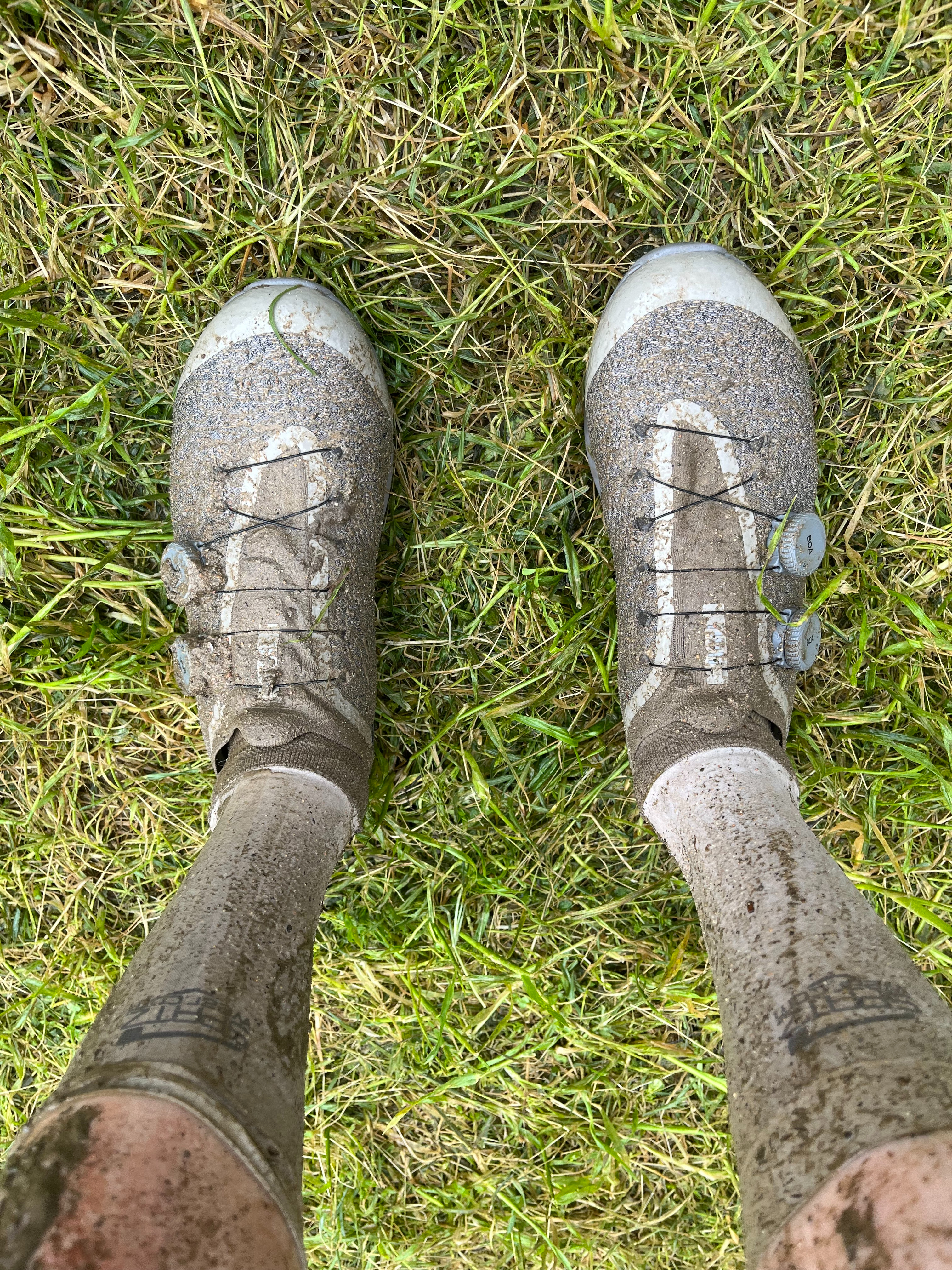
Overall, I have had a good experience with the Pro Team Powerweave. Putting them on is easily done, and the knitted ankle area stretches easily as you put your foot in, even if it isn't the widest opening. The shoes feel lightweight and very comfortable on foot, there have been zero niggles of any kind for me, and the whole tongue and ankle area is very soft.
I have feet that are on the narrow side and that aren't particularly big, height or volume-wise. I really like the way the Boa dials tighten the shoes down and where the wire loops themselves are positioned on the shoes. The wire locations paired with the soft Powerweave material result in a really nice, secure, but comfortable foot hold for me. I like it a lot, and for me, the overall fit and foot hold have been good. I do suspect riders with wide shoe needs may not find what they need here, though.
I've mentioned the very good grip already, walking in the shoes is also nice and comfortable. Despite the carbon mid plate on the sole, there's enough flex in the front of the shoe to keep things comfy off the bike; it's a nice blend, and they still feel more than stiff enough for me. I rode hard at the Traka in them and didn't feel let down in that area. There's less sole flex than something like the Northwave Hammer Plus, for instance, which is a shoe I used a lot last year.
They aren't waterproof, are fairly breathable, and have dried out well for me. Post Traka, I hosed them down, but Rapha recommends letting them dry and then cleaning with a brush, which I have also done. Wet wipes, as usual, have also been effective on the coated fronts and rears of the shoes, and they are still looking good. Plus, there's always the black version, which is always a safe bet.
Post Traka, the Boa Li2 dials on my shoes felt pretty terrible, this was due to them being covered in sand and mud and being generally gunked up. (see my post-race pic above) Once clean and dry, the dials still felt quite rough, gritty and laboured to turn. The best practice advice from Boa on this is to rinse the dials under running water and turn them repeatedly in both the open and closed positions to flush them out. Quite a lot of sand and fine grit came out of mine, and they pretty much instantly felt lovely and smooth again.
If you are doing muddy, mucky rides that expose the shoes or any Boa-equipped shoes for that matter, to a lot of dirt, this simple job will ensure they feel smooth again. Resist the urge to just 'give them a quick squirt' with something, which is always my first impulse. Boa doesn't recommend the use of any lubricants on the dials themselves.


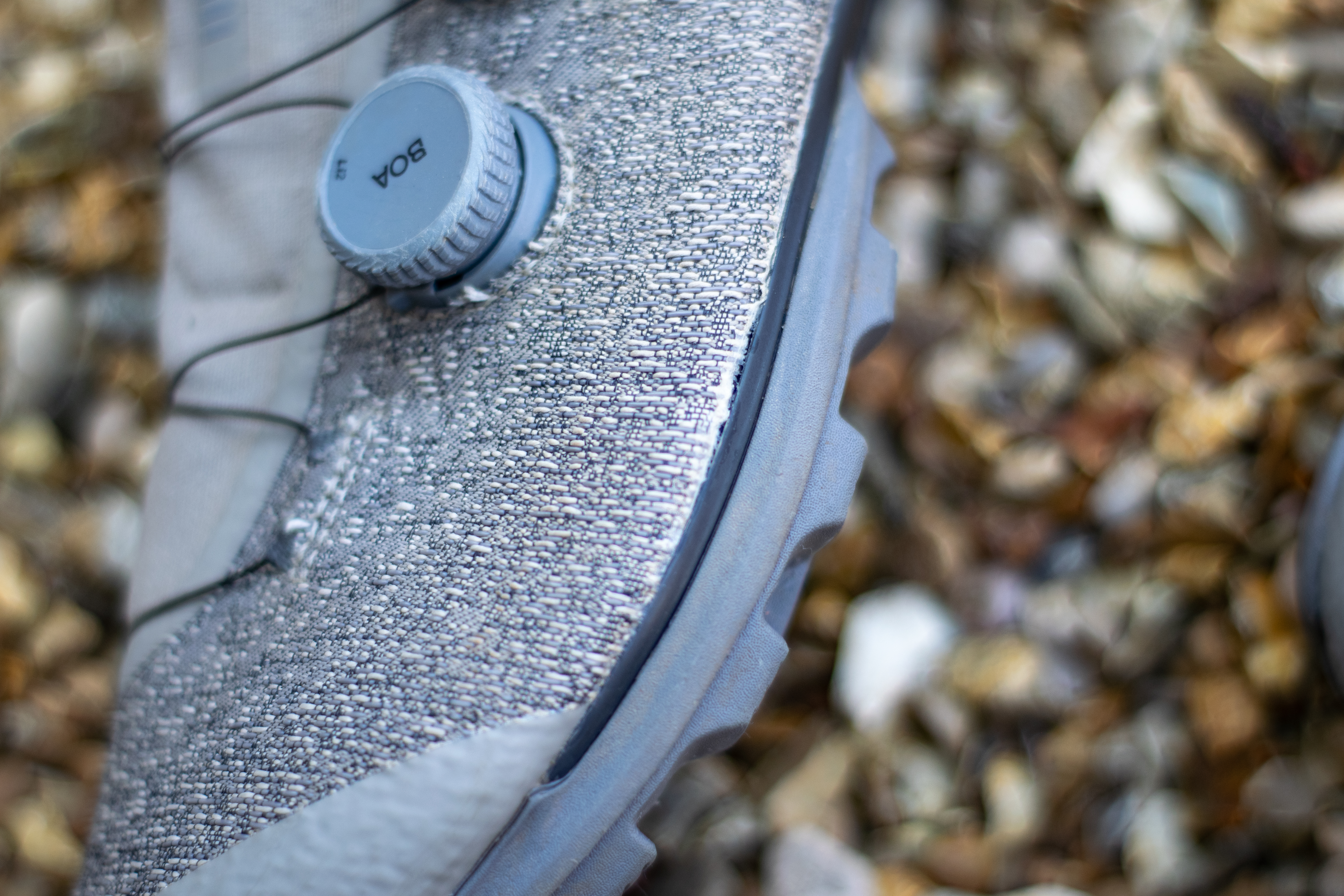
I have run into one issue during my test period. On both shoes, small sections of the bottom edge of the Powerweave upper material appear to be coming away from where they meet the sole of the shoe (pictures above). I fear that if I tried, I would ultimately be able to pull the two materials apart.
At the moment, this issue doesn't affect the usability of the shoe in the slightest, and it's barely noticeable unless you are looking for it, so I'm happily continuing to use them and monitor the issues.
However, it must be said that I've been using the shoes for less than six months, and apart from a small crash and a testing Traka 100, my riding has been standard gravel fare. This is a test pair, but if I had paid full RRP for the shoes, I would be concerned and would contact Rapha.
I did contact Rapha about the issue with my pair to see what they thought, and you can read the brand's response below. They also explained that customers with any product concerns should contact the Rapha customer service team.
"This is the only time we have seen anything like this during hundreds of hours and over 30,000km of rigorous testing across all conditions and terrains. The particular pair of shoes on test was made in the sample room at our supplier in order to have them ready for press pre-launch.
"With these types of samples, we do sometimes see issues that don't occur in final production, and we have total confidence that the commercial version of the shoes meets Rapha's highest quality standards. For further reassurance, we have raised the issue with our supplier to ensure this can be avoided in the future."
It sounds like this could just be a one-off from a sample pair of shoes. Issues can simply just happen sometimes, and I can still use the shoes without issue. I'm going to keep wearing them and see how things play out.
If I had paid for them, I'd be hoping for a replacement pair from Rapha because I wouldn't expect this sort of issue within the first six months of use from premium-level shoes.
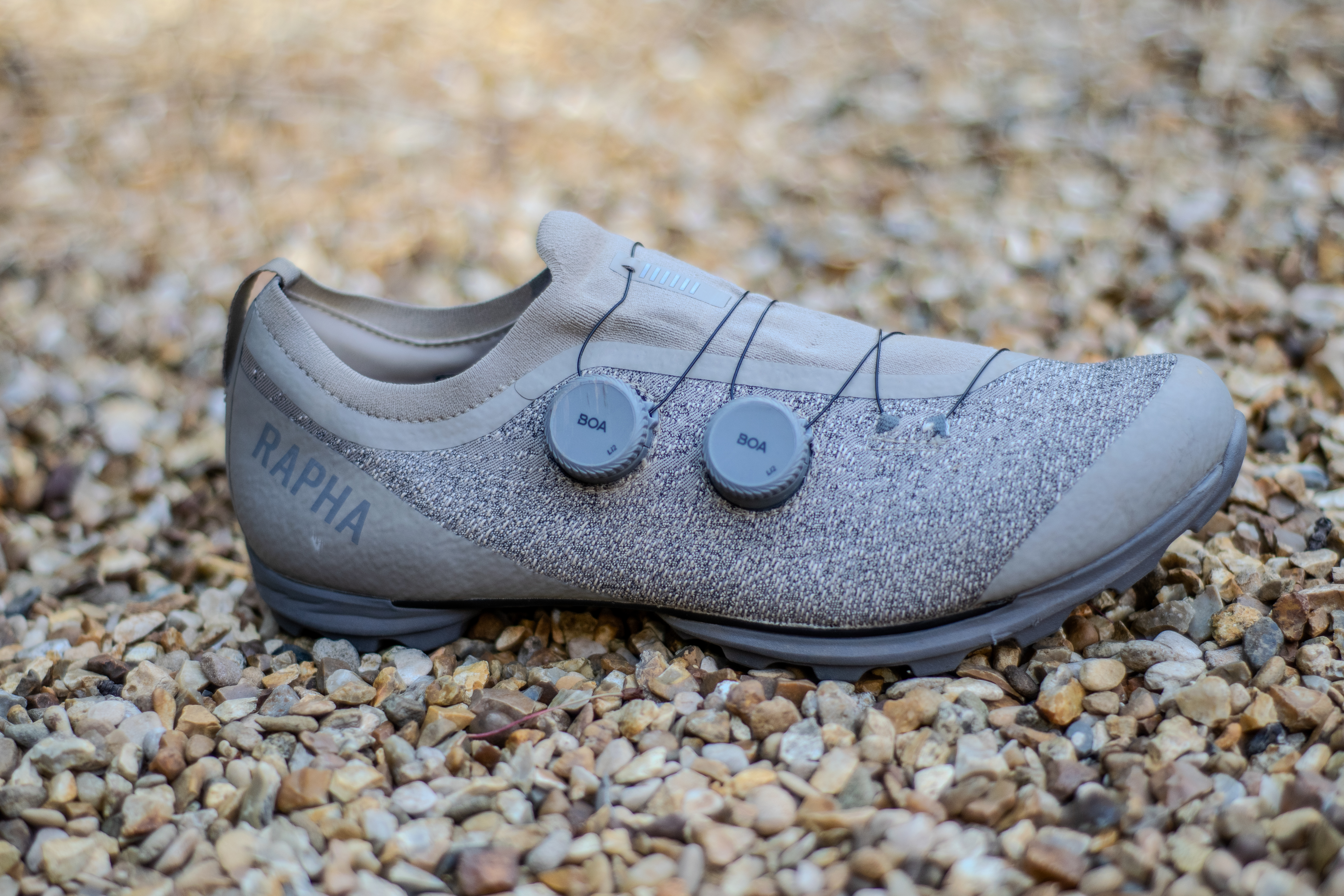
Value
These are expensive shoes at £350 / $480 / €420. They cost more than any offering from Fizik, Giro, Shimano, or Quoc.
This is top of the tree pricing, so let's compare it to the competition. The top-tier Specialized S-Works Recon 3 shoes are about the same price. I'm also testing these shoes at the moment, and will put them head-to-head.
Another direct competitor looks to be the DMT KMO gravel shoes, which retail for about the same price, and use a similar knitted construction and the same Boa dials, but with a Michelin carbon fibre sole. The Lake MX333 is also more expensive, but does feature heat-mouldable carbon fibre tech to fine-tune fit. The handmade Nimbl Urano is the priciest pair of gravel shoes I can find at £465.
I love the aesthetics and the fit works well for me, but I'm not sure I can find a standout reason for why you should buy these shoes specifically and spend more compared to a lot of other very capable gravel or off-road shoes, which cost less.
I think there's a bit of style tax here from Rapha, and I don't think the value offering is too strong.
Verdict
I really like these shoes, they have been very comfortable for me and have performed well across a range of terrain. I'm happy using them for chilled out gravel spins and going hard at events or races. They aren't pure race shoes, and Rapha has created a good blend of performance and comfort in an attractive package.
I do, however, find these shoes a touch too expensive overall.
| Design and aesthetics | A stylish design, that uses a grippy Vibram sole, and comfortable design. I've had some issues with my uppers debonding, Rapha says it is a one off | 7/10 |
| Performance | Very good for me, across a range of terrain | 9/10 |
| Comfort and retention | Very comfortable for me, I really like the Boa lace posistioning and the foot hold it provides | 9/10 |
| Weight | At 311g per shoe in a 43, in line with the competition, they also feel very lightweight on foot | 8/10 |
| Value | These are expensive shoes and I can't find a hard reason why you should speciically spend more on them aside from just liking the look of them. Not fantastic value | 6/10 |
| Row 5 - Cell 0 | Row 5 - Cell 1 | 39/50 |

Tom joined the Cyclingnews team in late 2022 as a tech writer. Despite having a degree in English Literature he has spent his entire working life in the cycling industry in one form or another. He has over 10 years of experience as a qualified mechanic, with the last five years before joining Cyclingnews being spent running an independent workshop. This means he is just as happy tinkering away in the garage as he is out on the road bike, and he isn’t afraid to pull a bike apart or get hands-on with it when testing to really see what it’s made of.
He has ridden and raced bikes from an early age up to a national level on the road and track, and has ridden and competed in most disciplines. He has a keen eye for pro-team tech and enjoys spotting new or interesting components in the wild. During his time at Cyclingnews, Tom has already interviewed some of the sport's biggest names including Mathieu van der Poel, Tadej Pogačar and Alberto Contador. He's also covered various launches from brands such as Pinarello, Ridley, Specialized and more, tackled the Roubaix Challenge sportive aboard his own rim-brake Cannondale SuperSix Evo, tested over 20 aero helmets in the wind tunnel, and has created helpful in-depth buying advice relating to countless categories from torque wrenches to winter clothing.
You must confirm your public display name before commenting
Please logout and then login again, you will then be prompted to enter your display name.
